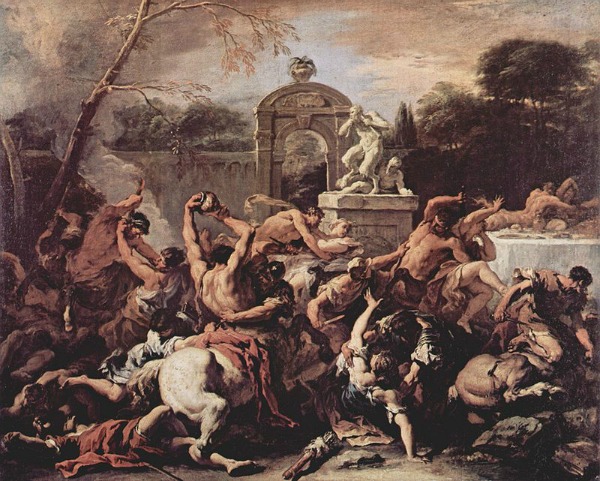The 12 Olympian gods
An impressive animation video that brings to life the 12 Gods of Olympus and reveals the mythology of the legendary mountain. With vibrant colors and dynamic motion, the video showcases each deity with their unique characteristics and powers. Through narration, the gods come to life as the story unfolds, highlighting the role of Olympus as their residence. This journey offers a captivating glimpse into their strengths, weaknesses, and interactions, showcasing the significance of Greek mythology.
LEGENDS AND MYTHS OF ELASSONA
Tracing the Paths of Gods and Heroes
Pirithous and the Centauromachy
Pirithous, son of Zeus, was the king of the Lapiths and renowned for his role in the Centauromachy. This legendary battle erupted during his wedding to Hippodamia, when the Centaurs attacked the guests. Pirithous, alongside his friend Theseus, confronted the Centaurs and defeated them, driving them from Mount Pelion to the Aethices, a region in Thessaly near Mount Olympus. This story symbolizes the struggle between civilization and barbarism and is deeply intertwined with the mythical landscape of the area.

Polypoites and the Trojan War
Polypoites, son of Pirithous and Hippodamia, played a significant role in the Trojan War, commanding 40 black ships. He is mentioned in the Iliad as the leader of warriors from Argissa, Gyrtone, and the Perrhaebian cities of Orthe and Oloosson, located in the region of modern Elassona. Polypoites stands as a prominent figure of the area, symbolizing the legendary conflict and embodying the heroic ideal of ancient Greece.
Guneus and the Perrhaebians in the Trojan War
Guneus, hailing from Cyphus, was the leader of the Perrhaebians and the Aenianes during the Trojan War, commanding a fleet of 22 ships. The Perrhaebians were an ancient Greek tribe inhabiting the regions around Mount Olympus, their name closely tied to Thessaly. Guneus’s participation in the war links the area of modern Elassona to the grand epic tradition, underscoring its connection to the heroic narratives of Greek mythology.
Harsh-Wintered Dodona and the Perrhaebians
In Homer’s Iliad, the “harsh-wintered Dodona” is mentioned as a region inhabited by the Perrhaebians and Aenianes. Achilles prayed to Dodonian Zeus for assistance, imbuing Dodona and its people with religious and mythological significance. Although Dodona lies outside Thessaly, it is spiritually linked to the Perrhaebians and the Dodonian oracle, highlighting Thessaly’s role as a central hub in the ancient worship of Zeus.
Homeric Hymn to Apollo and the Land of the Perrhaebians
In the Homeric Hymn to Apollo, the god’s journey through the land of the Perrhaebians is described, beginning from Pieria and Mount Olympus. This mention of Apollo passing through Perrhaebian territory connects the god to the region, endowing Elassona with mythological significance as part of the journey of one of the most important gods of Mount Olympus.
Azoros and the Argonautic Expedition
Azoros was one of the sailors aboard the Argo during the Argonautic Expedition, which aimed at acquiring the Golden Fleece. He hailed from the city of Azoros, near the region of Elassona, and his name has remained in memory as a contribution of the area to this significant mythological event.
Mopsus and the Calydonian Boar Hunt
Mopsus, the seer from Mount Titarius near Olympus, was a famous oracle and participated in the Argonautic Expedition as well as the Calydonian Boar Hunt, alongside other heroes such as Pirithous. Mopsus’s involvement in these legendary feats connects Thessaly and Elassona to the great heroic adventures of ancient Greece, highlighting the region’s role in the mythological tradition.
